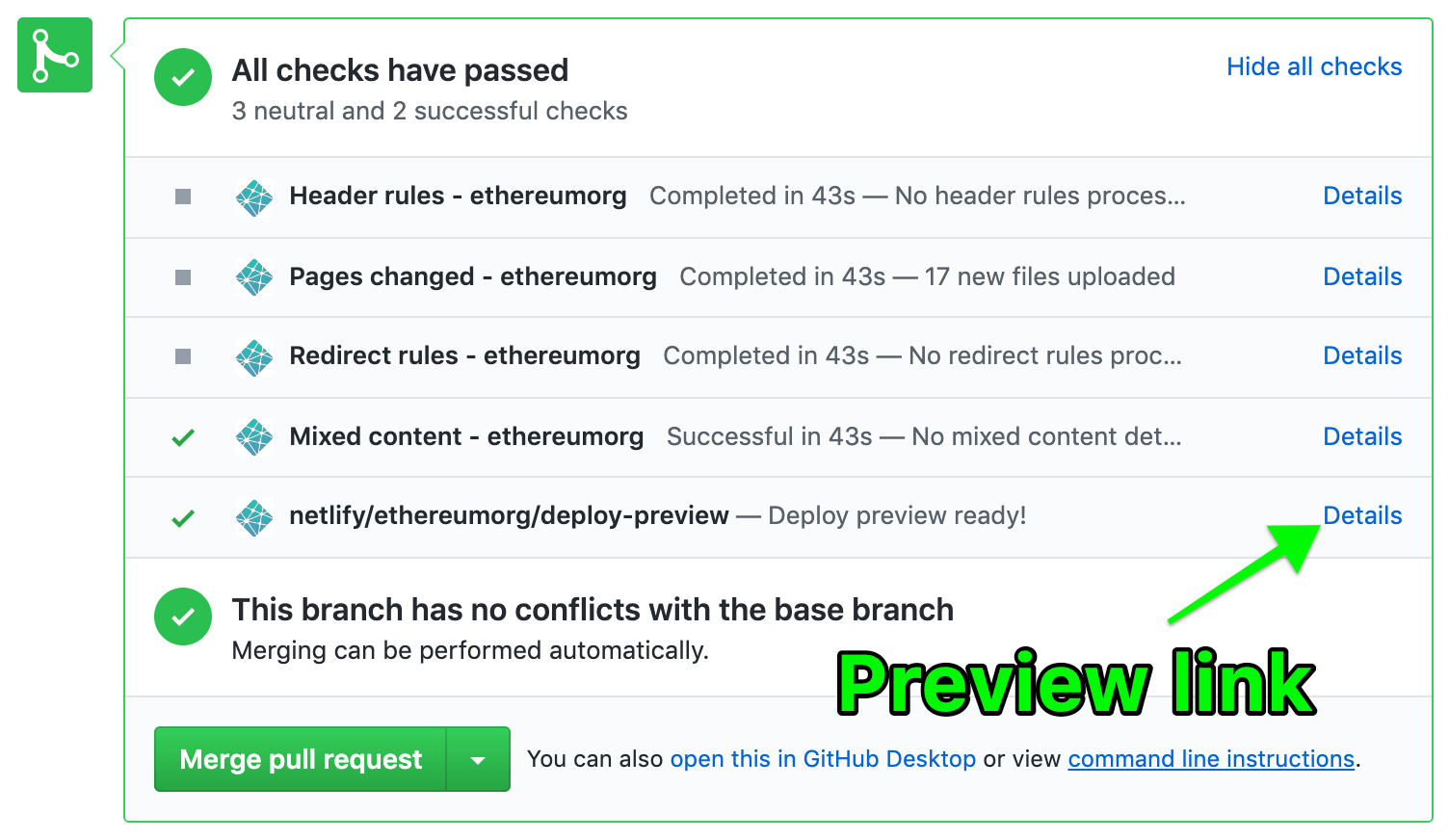ethereum.org is a primary online resource for the Ethereum community. The purpose of the site is to “Be the best portal to Ethereum for our growing global community" - read more about what this means here.
ethereum.org is improved and changed over time through the contributions of community members who submit content, give feedback, or volunteer their time to managing its evolution. If you’re interested in helping to improve ethereum.org, find out how to contribute.
How updates are made to ethereum.org
- Create a new issue
- Comment on the issue (if you'd like to be assigned to it) - that way our team can assign the issue to you.
If you're not sure, here's how to fork the repo
If you're ready to contribute and create your PR, it will help to set up a local environment so you can see your changes.
-
Fork this repo
-
Clone your fork
$ git clone git@github.com:[your_github_handle]/ethereum-org-website.git && cd ethereum-org-website
- Install dependencies
$ yarn
- Start developing!
yarn start
- Make your changes and submit a pull request (PR) to the
devbranch - In your PR commit message, reference the issue it resolves
- e.g.
Add height to sidebar for scroll [Fixes #185] - Read Closing issues using keywords for more information
- e.g.
- Netlify (our hosting service) deploys all PRs to a publicly accessible preview URL, e.g.:

- Confirm your Netlify preview deploy looks & functions as expected
- The website team reviews every PR
- See how decisions are made on content changes
- Acceptable PRs will be approved & merged into the
devbranch
masteris continually synced to Netlify and will automatically deploy new commits to ethereum.org- The website team will periodically merge
devintomaster(typically multiple times per week) - You can view the history of releases, which include PR highlights
Full documentation for Gatsby lives on the website. Here are some places to start:
-
For most developers, we recommend starting with our in-depth tutorial for creating a site with Gatsby. It starts with zero assumptions about your level of ability and walks through every step of the process.
-
To dive straight into code samples, head to our documentation. In particular, check out the Guides, API Reference, and Advanced Tutorials sections in the sidebar.
Thanks goes to these wonderful people (emoji key):
This project follows the all-contributors specification. Contributions of any kind welcome!
A note on emojis We use Twemoji, an open-source emoji set created by Twitter. These are hosted by us, and used to provide a consistent experience across operating systems.


